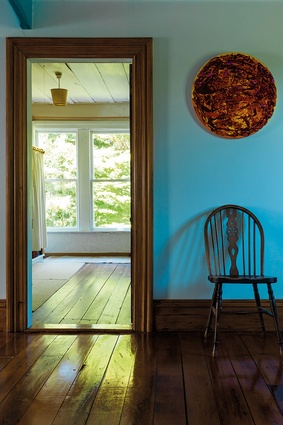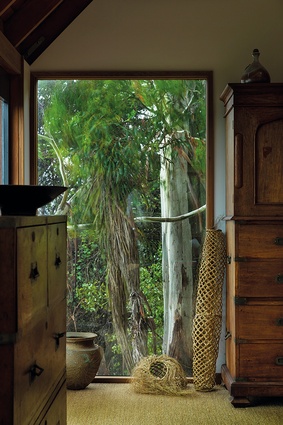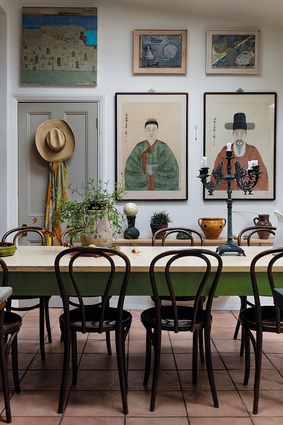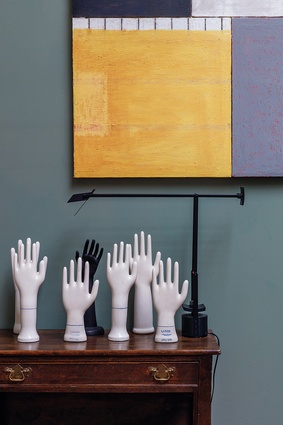Review: Rooms: Portraits of Remarkable New Zealand Interiors
In Rooms, Marian Macken is captivated by Jane Ussher's portraits of over 300 interiors across some of New Zealand's most remarkable homes and finds the accompanying text from John Walsh provides an intriguing kind of biography about each space.
Christian Marclay, the collagist who made an ingenious film called The Clock (2010) – which spliced together some ten thousand clips from films featuring timepieces in order to make a new film, synchronised with 24 hours of time – had an idea for his next collaged work. This would be a film of endless rooms; when the character on screen passed through a doorway, Marclay would make an edited ‘hinge’ to a new scene, which would then lead to another character doing the same. We, as viewers, would be endlessly passing through doorways. However, creating such seamless transitions between film edits obviously proved too difficult; bodies needed to be moving at the same momentum, through doors opening in the same direction, shot using similar angles of cameras. Such a cinematic spatial passage doesn’t seem to exist in the world. I am reminded of this intended continuous passage while paging through Jane Ussher and John Walsh’s new book, which has us hovering on this threshold; we are paused as we gaze into rooms, held in doorways on the brink of ever entering.
Rooms: Portraits of Remarkable New Zealand Interiors includes more than 300 pages of interior photographs from 87 houses (this is a big book). These are sandwiched between text; an excellent essay by Walsh precedes the photos and information about the rooms’ houses comes after, as a kind of biography of each space, telling us about architects, past owners and their contents. Here, for example, we are told from where a cornice was sourced and an 1876 purchase ledger bought (a named antique dealer; a flea market in Nagoya), and, of particular interest for this reader, which interior housed the introducer of wallabies to his estate.
Ussher’s photographs are masterfully crafted. They are composed and positioned with care, demonstrating an astute handling of design across each spread. Colour alignments and compositional juxtapositions lead to engrossing page-turning. There is little breathing space amongst the images; this is not a book of white space. Instead, it is full pages of saturated colour: walls of midnight blue and gold, fabrics of dusky pink and olive grey. And so many objects and artworks: animals, painted, stuffed and mummified (birds of prey, horses, tigers, a cat); collections (of vessels, for sake and for flowers, books and toy soldiers); lipstick graffiti; and an extraordinary number of empty chairs. These are rooms as containers of things. Walsh aptly writes that the photographs have “the visual calorie count of French haute cuisine”; a reader needs to turn these pages slowly to take it all in, aided by Inhouse’s impressive book design.
This is not a documentation of lived-in-ness, in the way of Tracey Emin’s Turner-winning dishevelled bed. The usual traces of inhabitation are omitted; there is no sense that the inhabitants have just exited stage left and no trailing laptop charging cords amongst crumbs from a hastily eaten sandwich. But these people-less photographs contain and include their inhabitants all the same. These may be read as documents of decision-making, proof of deliberations: of acquisitions and composition, colour and placement, what to keep and what not. Rooms is an invitation to view the outcomes of thoughtful consideration – both the inhabitants’ and the photographer’s; Walsh’s essay tells us of the meticulous curation involved in the taking of these photographs. Thanks to this, the book’s title has pinpoint accuracy; they are remarkable rooms which, the Cambridge dictionary reminds us, are unusual or special and, therefore, surprising and worth mentioning, and they are certainly portraits – these rooms are looking back at us, holding our gaze.
These are interiors without plans, rooms without sections, whose exteriors seem to be of little importance. Some glimpses to the exterior are included but these add to photographic composition rather than spatial explanation. Each year, media around the world print lists of suggested summertime reading, of books that may engage us while we are immersed in sun and sea breezes. It is unlikely this book would ever feature on such a list. Instead, it asks for a different rhythm and different weather – it is a season of stillness and perhaps coolth that emanates – and a different focus, of interiority and intimacy. In closing its cover, we contain this book’s abundance within.
*Giveaway*
ArchitectureNow has one copy of Jane Ussher and John Walsh’s exquisite new book Rooms to give away to a lucky reader. To enter, follow Architecture NZ and Massey University Press and comment on their Rooms post tagging @architecture.nz to go into the draw. Entries close 26 Jan 2023 NZDT; open to NZ residents only. Enter the draw…

















